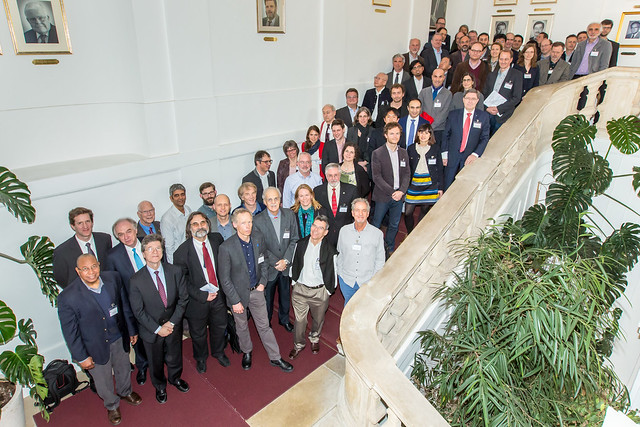30 May 2016
Sustainable Development Solutions Network: Leadership Council meeting 2016
In this year’s meeting the group focused on the outcome of the Paris Climate Change Conference (COP 21), how the agreement can be implemented, and also identified the necessary analytical support. The Leadership Council also discussed how the European Union and the SDSN can work together to achieve the UN Sustainable Development Goals. The group will seek to continue expanding the SDSN network to develop a long-term sustainable development pathway for Europe and beyond through The World in 2050 (TWI 2050) project – which was launched at IIASA in March 2015.
IIASA Director General and CEO Professor Dr. Pavel Kabat participated in the meeting. The SDSN was launched by UN Secretary-General Ban Ki-moon and is under the leadership of Jeffrey Sachs, Director of the Earth Institute at Columbia University, who is a IIASA Distinguished Visiting Fellow and a member of the Alpbach-Laxenburg Group.
Kabat is a member of the SDSN Leadership Council, along with a number of global leaders including HSH Prince Albert II of Monaco; Peter Bakker, President of the World Business Council for Sustainable Development; Naoko Ishii, CEO and Chairperson, Global Environment Facility; Paul Polman, CEO, Unilever; Cynthia Rosenzweig, IIASA Alumna and Senior Research Scientist at the NASA Goddard Institute; and Carl-Henric Svanberg, Chairman of both BP and Volvo AB.

The World in 2050 Project
The World in 2050 Project (TWI2050) will explore the implications of the necessary transformative sustainable development pathways and the possible ‘degrees of freedom’ to meet economic development goals within a safe operating space of a stable planet. This project will serve the global community with analyses of pathways the world (sectors, nations, communities) can take to attain these internationally agreed sustainable development goals within planetary boundaries, and to monitor progress and success towards their achievement.
It will enhance the understanding of the requirements of desirable and feasible sustainable development pathways. This will fill an urgent gap, of analyzing the options, feasibility and consequences (socially, economically and environmentally) of transitioning to pathways to sustainable development. The project will explore avenues to achieve sustainable development pathways, by back-casting from desired development outcomes as defined by the SDGs. The initiative will combine recent advancements in economic modeling and Earth system science to study the interactions between economic growth and global sustainability for sustainable development (SD) pathways. It will use existing global assessments and scenarios (e.g., the SDSN Deep Decarbonization Project) and integrated assessment models (e.g., MESSAGE, IMAGE, and IMPACT/ GLOBIOM/GAEZ) to evaluate the linked impacts of global food policy, ecosystem changes, climate change and energy use. The transformative pathways will serve to identify short-term actions for achieving sustainable futures and their co-benefits e.g. for health or security. Current trends as captured by business-as-usual (BAU) developments will help identify costs and damages of inaction. By integrating several world-class models in key sectors (energy, food, population, education, macroeconomics, biodiversity, climate, etc.) the project will produce paradigm-shifting narratives and scenarios that will significantly expand the capacity to carry out integrated assessments of critical pathways.
Importantly the project will examine the interactions among all the SDGs to explore the potential for co-benefits and/or trade-offs of addressing multiple SDGs at the same time, which can provide critical information for policy and investment decisions. This will allow the project to generate the 1st generation of global scenarios that meet the twin objectives of economic growth and planetary stability and thus provide improved evidence, including macro-economic assessments, to political leaders in the SDG process, and other key decision makers, on the feasibility, challenges and opportunities associated with meeting long-term development goals, i.e., development goals that are truly sustainable at a global scale.
Research Partner


